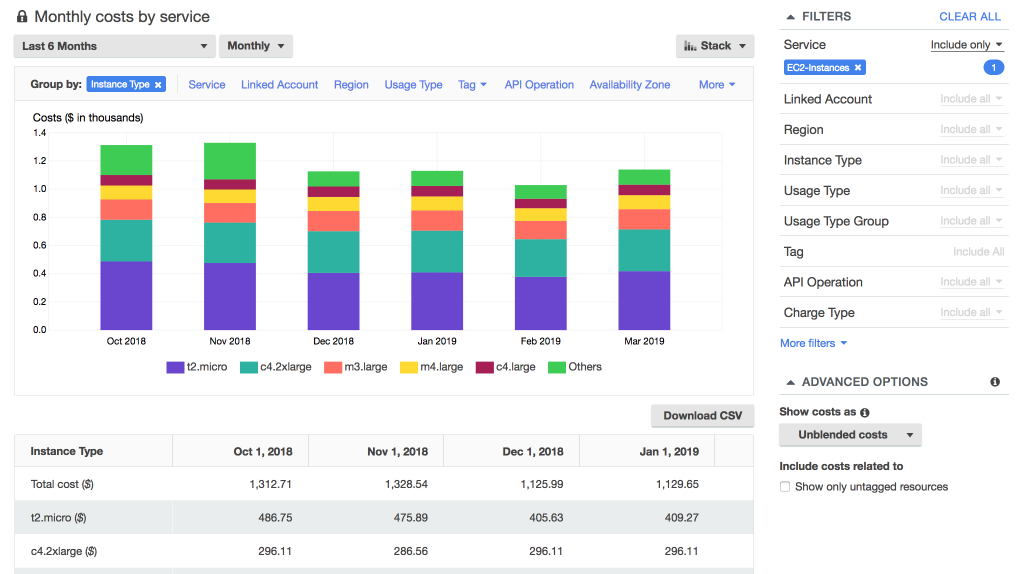Unveiling the Magic of AWS Billing & Costing with Cost Allocation Tags
 Sumit Mondal
Sumit Mondal
Introduction:
Happy 1-year anniversary to us! As we celebrate this milestone, let's dive into an aspect of the cloud that's both crucial and often mystifying - AWS Billing & Costing, specifically focusing on the enchanting world of Cost Allocation Tags. In this blog post, we'll demystify the intricacies of AWS billing, explore the significance of cost allocation tags, and embark on a hands-on journey with a real-world example.
Understanding AWS Billing & Costing:
Cloud computing has revolutionized the way businesses operate, providing unparalleled flexibility and scalability. However, managing costs in the cloud can be a daunting task. AWS Billing & Costing is designed to help users gain insights into their cloud spending, enabling better control and optimization.
AWS offers a pay-as-you-go pricing model, which means you pay for the services you consume. To gain visibility into your spending patterns, AWS provides detailed billing reports, which include information about your usage, costs, and other relevant metrics.
Enter Cost Allocation Tags:
Cost Allocation Tags are like magic markers for your AWS resources. They allow you to label and categorize your resources with metadata, making it easier to understand and manage costs. With these tags, you can track spending across different departments, projects, or any other dimension that matters to your organization.
Why are Cost Allocation Tags Important?
Granular Cost Visibility: Cost Allocation Tags offer a granular level of visibility into your spending. Instead of viewing your expenses as a lump sum, you can break them down into specific categories based on your tags. This helps you identify where your money is going and optimize accordingly.
Resource Attribution: Tags allow you to attribute costs to specific resources. Whether it's a development environment, a production server, or a project in its early stages, you can assign tags to ensure accurate cost attribution. This level of detail is invaluable for financial planning and decision-making.
Effective Budgeting: By leveraging cost allocation tags, you can create budgets that align with your organizational structure. This enables you to set spending limits for different teams or projects, preventing unexpected overruns and promoting fiscal responsibility.
Enhanced Accountability: Tags promote accountability by providing a transparent view of who is consuming what resources. This accountability encourages teams to be mindful of their usage and helps in fostering a culture of cost consciousness.
Hands-On Example:
Let's bring theory into practice with a hands-on example. Imagine you are managing a multi-team project with distinct environments: Development, Staging, and Production. You want to track costs separately for each environment.
Tagging Resources: Start by tagging your resources. For instance, tag your EC2 instances with 'Environment:Development', 'Environment:Staging', or 'Environment:Production' based on their respective roles.
aws ec2 create-tags --resources i-1234567890abcdef0 --tags Key=Environment,Value=DevelopmentCost Explorer Analysis: Navigate to AWS Cost Explorer, and utilize the 'Costs by Tag' report. Select the 'Environment' tag, and voila! You can now see a breakdown of costs for each environment.
Budgets for Each Environment: Create budgets tailored to each environment. This ensures that teams have a clear spending limit, preventing unexpected surprises.
aws budgets create-budget --account-id your-account-id --budget-name Development-Budget --budget-limit 100.0 --planned-budget 100.0 --time-unit MONTHLY --budget-type COST --cost-filters Service=AmazonEC2,TagKey=Environment,TagValue=Development
Conclusion:
As we celebrate our first year together, let's continue to explore and unravel the mysteries of AWS. Understanding and effectively managing costs is a crucial aspect of cloud adoption, and Cost Allocation Tags provide the magic wand needed to navigate this realm with confidence.
Remember, the true enchantment lies in the ability to transform complex billing data into actionable insights. So, tag your resources, embrace the power of granularity, and watch as the magic of AWS Billing & Costing unfolds before your eyes! Cheers to another year of learning and discovery in the cloud!
Subscribe to my newsletter
Read articles from Sumit Mondal directly inside your inbox. Subscribe to the newsletter, and don't miss out.
Written by

Sumit Mondal
Sumit Mondal
Hello Hashnode Community! I'm Sumit Mondal, your friendly neighborhood DevOps Engineer on a mission to elevate the world of software development and operations! Join me on Hashnode, and let's code, deploy, and innovate our way to success! Together, we'll shape the future of DevOps one commit at a time. #DevOps #Automation #ContinuousDelivery #HashnodeHero